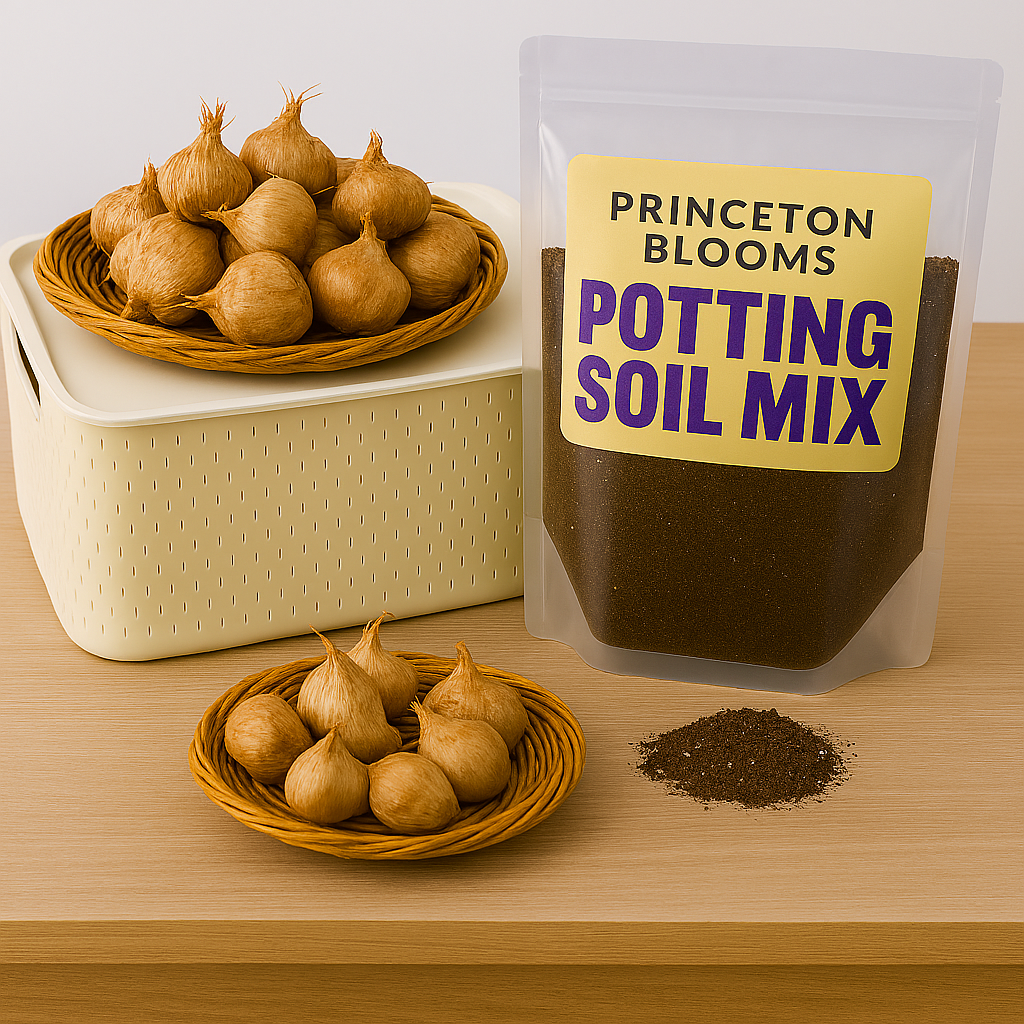FREE SHIPPING ON ORDERS OVER $99
Orders for 2025 closed - NOW taking pre-orders for 2026 fall season only

DIY Kit : 15 Bulbs + Container + Potting Mix (PRE-ORDER for FALL 2026)
All-In-One Kit for Homegrown Saffron Success
$34.99
Taking PRE-ORDER for FALL 2026 Now - Ships in Sept 2026.
NO HASSLE - ALL YOU NEED to grow your own saffron at home.
Discover the magic of homegrown saffron with our DIY Saffron Growing Kit. The kit includes premium saffron corms, nutrient-rich potting soil, and a convenient growing container – everything you need for a simple, mess-free start. Whether you're a gardening pro or just getting started, this all-in-one kit makes it easy to enjoy fresh, fragrant saffron in your own space. Just plant, water, and watch your saffron bloom! We provide step-by-step instructions and seasonal care guidance to help you grow healthy plants and enjoy high-quality yields year after year.
*Picture shown for reference - Container look/size may vary.
Saffron Growing Timeline and Care:
Saffron is Fall blooming flower and prefers hot, dry summers and short, mild winters. A drop in temperature after the summer heat is essential to wake the bulbs and initiate the flowering process. The bulbs need well-drained soil to prevent rot and a lot of Sun.
Saffron can be grown in USDA Zone 4 to 10 - grows best in USDA zones 6-8, with zone 4-5 requires careful winter protection and zone 9-10 requires summer management.
📅 Late August – September: Planting
Plant in well-drained soil, full sun.
Depth: 4 to 6 inches
Spacing: 2 to 4 inches apart
Water after planting if the soil is dry.
📅 October - November: Flowering
Flowers last 1–3 days.
Harvest at dawn (before sun damages the stigmas).
Carefully pluck the red stigmas.
Tip: Dry stigmas and store in airtight containers away from light and moisture. The flowers with stigmas can be kept indoor to air dry – the fragrance from the flower will fill the room with sweet aroma.
📅 November – February: Foliage Growth (Photosynthesis Phase)
Green, grass-like leaves grow.
Photosynthesis begins to replenish corm energy for next year.
Keep watering lightly but regularly if rainfall is insufficient.
📅 March – May: Foliage Matures & Dies
Leaves yellow and wither by late spring.
Do not cut leaves early - they feed next year’s flowers.
Reduce watering as dormancy begins.
📅 June – late August: Dormancy
Foliage dies back completely. No watering is needed.
Corm Multiplication
Each mother corm produces 2–8 new cormlets yearly.
Corms multiply underground during the foliage period (Nov–April).
Replant or separate corms every 3–5 years to maintain productivity
